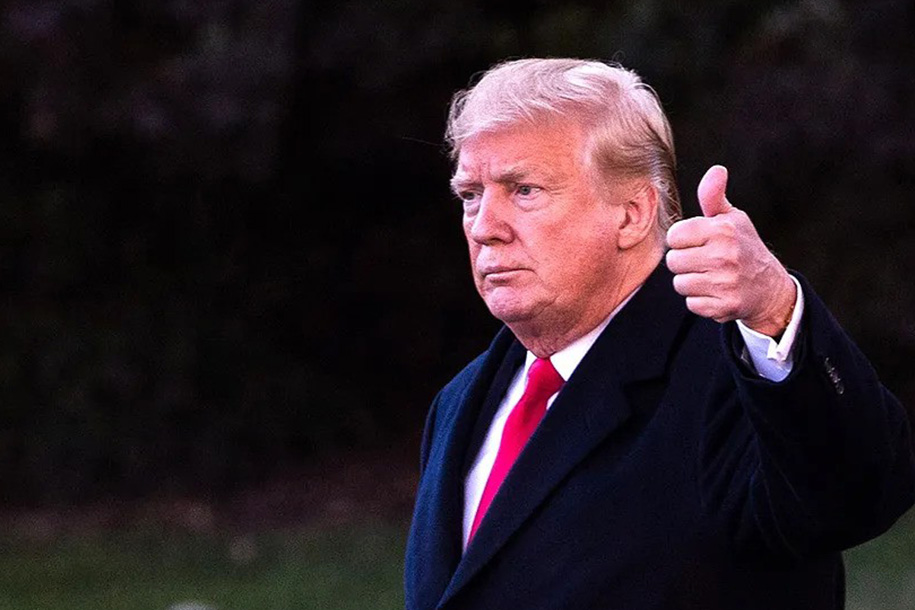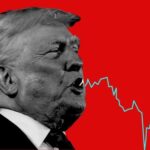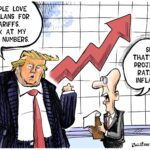The Unfulfilled Promises of Trump’s Trade Policy and Trump Tariffs
Donald Trump’s trade policy hasn’t delivered the results he promised. Worse, it’s hurting Americans.
Trump tariffs have increased the cost of imported components and put pressure on corporate profit margins likely to lead to job loss, weaker wage growth and lower consumer spending (which accounts for 72 percent of GDP.) Many sectors suffer from dropping sales, and China is adjusting by replacing US imports with goods from other countries.
Economic Strain Across Industries Due to Trump Tariffs
Manufacturers in many Federal Reserve districts report higher prices, supply chain disruptions and shrinking margins attributable to Trump’s trade policies. Tariffs are also hurting businesses and job growth, causing job loss, and incentivizing companies to move production offshore.{mosads}
Impact on the Pork Industry and Beyond Due to Trump Tariffs
China’s retaliatory tariffs on United States’ pork have cut U.S. sales to China from 460,000 metric tons in 2016 to 170,000 through August of this year. The USDA reported the biggest weekly drop in net pork sales since October 2016. Chinese buyers have found companies in Europe and South America to replace sales from the U.S. There’s reason to worry this is not a short-term aberration but a long-term change in the global market for one of the world’s largest commodities.
Disruptions in Other Agricultural Sectors Caused by Trump Tariffs
China also found suppliers in Canada and Brazil for soy beans it used to buy from U.S. farmers. Two thousand U.S. pecan growers saw their sales hit by Chinese retaliatory tariffs.
The Ripple Effect on Small Businesses from Trump Tariffs
Some small businesses aren’t hiring due to soaring steel and aluminum prices. The Tampa Bay Times laid off 50 workers this year in reaction to higher newsprint prices. California Light & Motion, a lighting company, is moving production abroad.
Manufacturing Challenges and Offshoring Due to Trump Tariffs
Companies that shifted manufacturing back to the U.S. have scuttled plans to expand and hire workers because tariffs were making imported parts too costly.
Walmart and Other Major Corporations Respond to Trump Tariffs
Bicycle manufacturer Kent International had opened a South Carolina factory because Walmart, its biggest customer, promoted U.S. manufacturing. But the economics didn’t work. Kent’s CEO, Arnold Kamler now travels to Thailand, Vietnam, Cambodia, the Philippines and Taiwan to find new suppliers for Chinese products. “We are not bringing jobs back to America with this thing,” Kamler said. “We are bringing jobs to different countries in Southeast Asia.”
Widespread Corporate Reactions to Trump Tariffs
Walmart warned the U.S. Trade Representative that tariffs on Chinese components may force price hikes and undermine its efforts to re-shore production.
Caterpillar and Harley-Davidson’s Tariff Troubles Due to Trump Tariffs
Caterpillar and Harley-Davidson complained that higher commodity prices from tariffs will be a drag on 2018 results. Harley said it plans to relocate some production overseas to avoid European Union retaliatory tariffs, which will cost some employees their jobs.
The Economic Cost of Trump Tariffs
U.S. manufacturers that use Chinese components subject to tariffs suffer because Chinese-made finished goods with the same components avoid U.S. tariffs and are less expensive.
Projected Economic Decline from Trump Tariffs
The Tax Foundation estimated that if all tariffs announced as of June 22 were fully enacted, U.S. GDP would fall by 0.59 percent ($148 billion), wages would fall by 0.38 percent and employment would fall by 459,816. Forbes recently concluded that if China and other countries retaliated with their own tariffs, output in all countries will fall and global GDP would contract.
According to the International Monetary Fund, trade tensions created by Trump’s tariffs could cut global growth 0.5 percent by 2020 (or $430 billion in lost GDP worldwide), with America having the most to lose given its high volume of exports.
Trump’s tariffs are not hurting the Chinese enough for them to capitulate. The negative impact on China’s growth may range from 2 percent to 3.4 percent of exports, and 0.3 percent to 0.5 percent of nominal GDP. Chinese companies are shifting production to countries like Vietnam, Serbia and Mexico to avoid U.S. tariffs.
Trump isn’t shrinking the trade deficit with China or globally as he promised. The nine-month China trade surplus with the U.S. is $225.79 billion, up 15 percent from the same period last year. Those deficits will probably grow, spurred by domestic demand and a strong dollar. China’s monthly trade surplus hit a record high of $34.1 billion in September, up from a $31.05 billion surplus in August.
There’s no evidence that the new NAFTA (aka the US-Mexico-Canada Agreement) would have any material effect on our trade deficit with Mexico or Canada. Nor is it likely to increase economic growth or manufacturing employment in the US. It will add costs to cars built in the U.S. with Mexican components, and could increase prices to U.S. consumers, make them less competitive with cars built elsewhere, and drive production outside the U.S.
More danger lurks. Trump is more like a petulant bully than a statesman, taking opposition personally and striking back at those who oppose him. So, buoyed by his highest approval ratings yet, he’s unlikely to back down.
Sadly, Congress won’t step in. Trump’s national approval rating is 47 percent versus just 14 percent for Congress. Among Republican voters, Trump’s approval rating is 85 percent, versus just 31 percent for Congress. Congressional Republicans won’t oppose Trump because they need his base to keep their seats. So in effect, Trump’s base is prescribing a trade policy that is hurting America.







